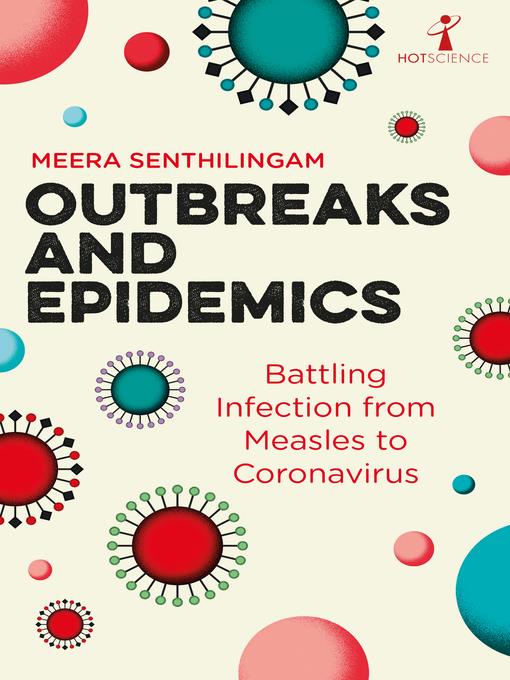
Outbreaks and Epidemics
Battling infection from measles to coronavirus
- اطلاعات
- نقد و بررسی
- دیدگاه کاربران
نقد و بررسی

For those panicked or puzzled by the current pandemic, a handy look at the evolution of infectious diseases and their cures. Coronaviruses have been with us for a very long time, but the one that first captured the world's attention emerged only two decades ago, when Severe Acute Respiratory Syndrome spread out of Hong Kong to 32 countries, eventually killing some 810 people over its five-month run. That seems a trifle against what global health journalis Senthilingam calls "a viral relative that would wreak greater havoc across the planet": the current outbreak of COVID-19. Although the government of China has not been entirely transparent about the outbreak, it appears at this writing that SARS prepared health workers to quarantine and isolate whole cities to keep the disease from spreading, and the number of new cases there has begun to decline. Outside China, of course, COVID-19 has become a pandemic, "the word that invokes fear in almost everyone," since pandemics are new diseases that require novel responses. It is no comfort to know that COVID-19 is but one of a roster of "emerging diseases" monitored lest they, too, become pandemics, including Ebola and Marburg viral diseases, Crimean-Congo hemorrhagic fever, and even a "Disease X"--"meaning a completely new, previously unseen infectious disease, such as COVID-19 at the time of its emergence." Though some have likened COVID-19 to the flu, there are few commonalities other than the fact that some populations--e.g., the immune-suppressed or the elderly--are more susceptible to being killed by both than other populations, as was witnessed in 2017-2018 with a flu that killed 61,000 people in the U.S. alone, leading Senthilingam to note that "it's fair to say the harm caused by influenza is far greater than people realize." A book that couldn't be more timely, providing an accessible introduction to epidemiology.
COPYRIGHT(2020) Kirkus Reviews, ALL RIGHTS RESERVED. (Online Review)

May 1, 2020
Senthilingam, a journalist with experience covering global health and infectious diseases, lays out a concise and informative overview of outbreaks and epidemics and describes how infections such as measles and the coronavirus are discovered and how they are treated. With an engaging writing style, the author aims to demonstrate the challenges public health workers face when recognizing, containing, and treating the relentless diseases afflicting humans, especially those that are less common. This is more than a regurgitation of facts; it's a fascinating history of how infectious diseases are recognized, how they spread, and how mitigation efforts are developed and executed across the world. The inclusion of definitions for key concepts in the field of public health are helpful and contribute to the work's usefulness, particularly for those with less health care knowledge. Timely and informative, this work effectively demonstrates the impact disease has on global health teams and the people they endlessly work to protect. VERDICT Of considerable interest to anyone who wishes to learn about infections, how they spread, and how they are managed. Required reading for anyone new to learning about issues of public health.--Rich McIntyre Jr., UConn Health Sciences Lib., Farmington
Copyright 2020 Library Journal, LLC Used with permission.

May 18, 2020
Health journalist Senthilingam debuts with a straightforward, helpful primer on understanding infectious disease spread and control. Beginning with terminology basics, she discusses how outbreak specialists decide to target a disease for control, elimination (as a threat), or eradication (erasing its presence in the population altogether). Senthilingam focuses on strategies for controlling spread and for quickly developing vaccines, and addresses at length the human factors that hamper these measures, including the overuse of antibiotics, which breeds antimicrobial resistance; the tendency of some patients not to complete protocols when they start to feel better; and the fear of vaccines, which in the U.S. and Europe has led to the reemergence of measles and in Pakistan and Afghanistan has interfered with the eradication of polio. Though brief references to Covid-19 appear throughout, Senthilingam concentrates on the disease’s predecessors. She covers ancient diseases still persistent in the undeveloped world, including leprosy, tuberculosis, and bubonic and pneumonic plague, and discusses zoonotic, or animal-spread, disease—insect-spread dengue, Zika, and Lyme; Ebola, thought to have been introduced to a wider population by an unknown infected animal; and influenza, transmitted by both birds and pigs. A lay audience currently mired in concern about Covid-19 but potentially uninformed about epidemics in general should find Senthilingam’s information-rich work both enlightening and accessible.




دیدگاه کاربران